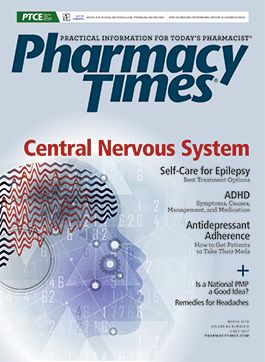Publication
Article
Pharmacy Times
Avoiding Errors With the Newer Inhalers
Author(s):
Several new devices for the administration of inhaled medications have been introduced.
Several new devices for the administration of inhaled medications have been introduced. Some of the devices are used to administer newly marketed medications, while others contain previously available drugs in a different administration format. They were designed to address some of the problems with older inhalers and to improve the ability to use the inhalers correctly.
These new inhalers include:
- A dose counter, which allows patients to see when the supply of medication is low. This was previously available on some dry powder inhalers but not on pressurized metered-dose inhalers.
- A longer duration of spray at a lower speed to help patients receive the full dose, despite problems with coordinating the spray with the breath and the depth of the breath (eg, Respimat soft mist inhalers)
- The inability to activate a dose when all the medication has been used. Once the last dose has been taken and the inhaler is empty, the mechanism to prepare another dose becomes locked.
Despite these design enhancements to promote correct use, unfamiliarity with the new inhalers on the market has been a source of errors, including:
CASE NO. 1
A patient discharged from the hospital with new prescriptions for Advair HFA (fluticasone and salmeterol), prednisone, Proventil HFA (albuterol), and Spiriva HandiHaler (tiotropium) was readmitted to the emergency department (ED) 3 days later with complaints of feeling “jittery,” increasing shortness of breath, and wheezing. When the patient was asked about taking his newly prescribed medications, the ED nurse learned that the patient had been taking 3 Spiriva capsules by mouth each day since discharge, unaware that the drug in the capsule was intended to be inhaled. The patient was treated and given both verbal and written instructions for use of his inhaled medications. The patient was also asked to return to a hospital clinic the following day with all of his medications to meet with a pharmacist, who provided hands-on education. Prior to leaving the clinic, the patient could demonstrate proper technique and verbalize when to use each inhaler. If education and repeat demonstration to verify understanding of medications had occurred prior to the patient’s initial discharge from the hospital, a visit to the ED might have been avoided.
CASE NO. 2
A color-blind patient was unable to tell whether the indicator window on a Tudorza Pressair (aclidinium bromide) inhaler was green or red. The window turns green when the inhaler is loaded with a dose and is ready to use and red when the dose has been completely inhaled. The patient mentioned this to his pharmacist when refilling his prescription. The pharmacist suggested that the patient use a pen to place a dot or mark on the green indicator to differentiate it from the red indicator.
To reduce the risk of error when patients use these new inhalers, consider the following strategies:
• Ask the patient to demonstrate inhaler technique, both when filling new prescriptions and periodi- cally when refilling prescriptions.
• Ensure that patient counseling and education include a demonstration of how the inhalation device should be used. Helpful how-to videos are available from the CDC (cdc.gov/asthma/ inhaler_video/default.htm), use-inhalers.com, product-specific websites, and other websites. The use-inhalers.com website also offers free handouts that provide step-by-step instructions in both English and Spanish for most inhalers.
• Focus education on the essential aspects of proper inhaler use and the importance of taking all doses.
• Observe their technique using inhalation devices to ensure proper delivery of the medications, if patients are not responding to treatment as expected.
• Remind patients to discard an inhaler when the dose counter is at 0, even if the device continues to spray what seems to be a dose.
Michael J. Gaunt, PharmD, is a medication safety analyst and the editor of ISMP Medication Safety Alert! Community/ Ambulatory Care Edition.







